The Second Approximation of the Averaging Method in the Dynamics of Controlled Motions of Vibration Systems with Dry Friction
Abstract
1. Introduction
2. Mathematical Model
3. A Note About Sticking Zones
4. General Scheme for Constructing the Second Approximation
5. Calculation of the Stationary Solution in the Second Approximation
6. Comparison with the Results of Numerical Integration
7. Conclusions
Author Contributions
Funding
Institutional Review Board Statement
Informed Consent Statement
Data Availability Statement
Conflicts of Interest
References
- Blekhman, I.I. Vibrational Mechanics; World Scientific: Singapore, 2004. [Google Scholar]
- Fidlin, A. Nonlinear Oscillations in Mechanical Engineering; Springer: New York, NY, USA, 2005. [Google Scholar]
- Andrianov, I.; Awrejcewicz, J. Asymptotic Methods for Engineers; CRC Press: Boca Raton, FL, USA, 2024. [Google Scholar]
- He, J.-H. The homotopy perturbation method for nonlinear oscillators with discontinuities. Appl. Math. Comput. 2004, 151, 287–292. [Google Scholar] [CrossRef]
- Bogolubov, N.N.; Mitropolskii, Y.A. Asymptotic Methods in the Theory of Nonlinear Oscillations; Gordon and Breach: New York, NY, USA, 1961. [Google Scholar]
- Sanders, J.A.; Verhulst, F.; Murdock, J. Averaging Methods in Nonlinear Dynamical Systems; Springer: New York, NY, USA, 1985. [Google Scholar]
- Zimmermann, K.; Zeidis, I.; Behn, C. Mechanics of Terrestrial Locomotion; Springer: Berlin/Heidelberg, Germany, 2009. [Google Scholar]
- Chernousko, F.; Bolotnik, N. Dynamics of Mobile Systems with Controlled Configuration; Springer: Singapore, 2024. [Google Scholar]
- Zeidis, I.; Zimmermann, K. Ein mathematisches Modell für die peristaltische Bewegung als Grundlage für das Design wurmartiger Mikroroboter. Techn. Mech. 2000, 20, 73–80. [Google Scholar]
- Bolotnik, N.N.; Zeidis, I.M.; Zimmermann, K.; Yatsun, S.F. Dynamics of controlled motion of vibration-driven systems. J. Comput. Syst. Sci. Intern. 2006, 45, 157–167. [Google Scholar] [CrossRef]
- Fidlin, A. On the asymptotic analysis of discontinuous systems. ZAMM 2002, 82, 75–88. [Google Scholar] [CrossRef]
- Pilipchuk, V.N. Nonlinear Dynamics: Between Linear and Impact Limits; Springer: New York, NY, USA, 2010. [Google Scholar]
- Llibre, J.; Mereu, A.C.; Novales, D.D. Averaging theory for discontinuous piecewise differential systems. J. Diff. Equ. 2015, 258, 4007–4032. [Google Scholar] [CrossRef]
- Itikawa, J.; Llibre, J.; Novales, D.D. A new result on averaging theory for a class of discontinuous planar differential systems with applications. Rev. Matem. Iberoam. 2017, 33, 1247–1265. [Google Scholar] [CrossRef]
- Plotnikov, V.A.; Zverkova, T.S. Method of partial averaging in the systems of standard form with discontinuous right-hand sides. Ukr. Math. J. 1993, 18, 156–159. [Google Scholar] [CrossRef]
- Appel, P. Traité de Mécanique Rationnelle; Gauthier-Villars: Paris, France, 1893. [Google Scholar]
- Whittaker, E.T. A Treatise on the Analytical Dynamics of Particles and Rigid Dodies; Cambridge University Press: Cambridge, UK, 1917. [Google Scholar]
- Anh, L.X. Dynamics of Mechanical Systems with Coulomb Friction; Springer: Berlin/Heidelberg, Germany, 2003. [Google Scholar]
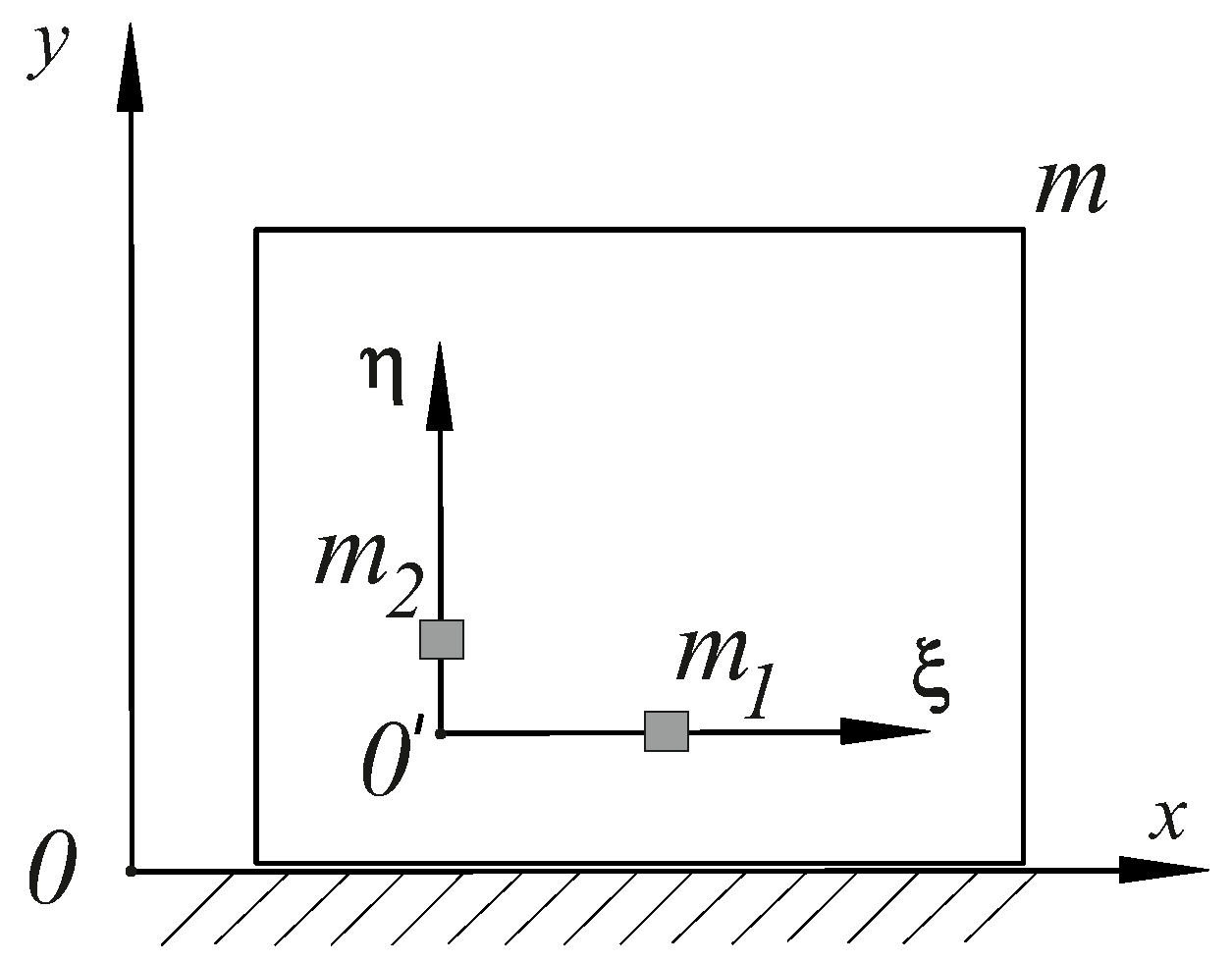

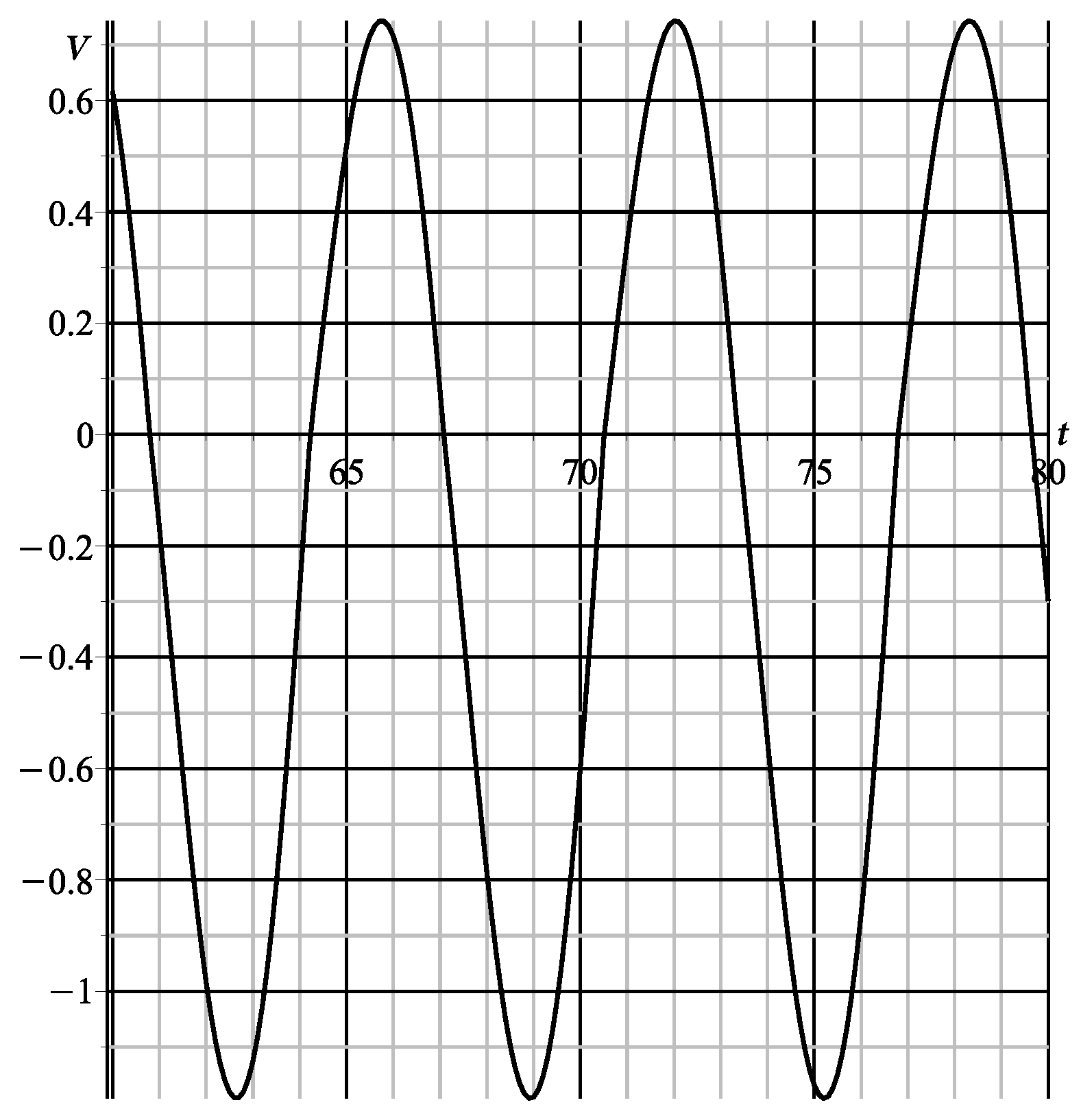
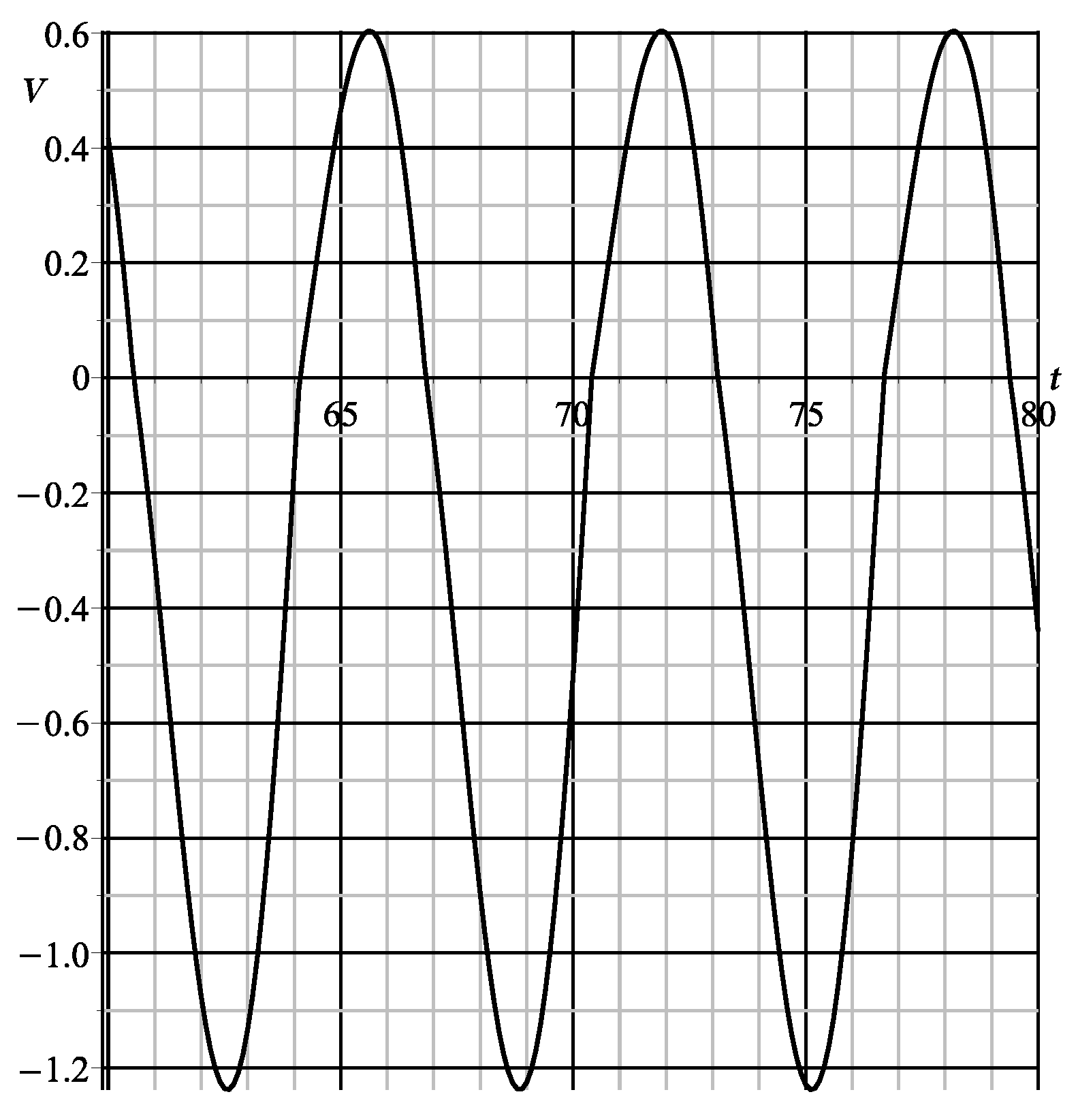
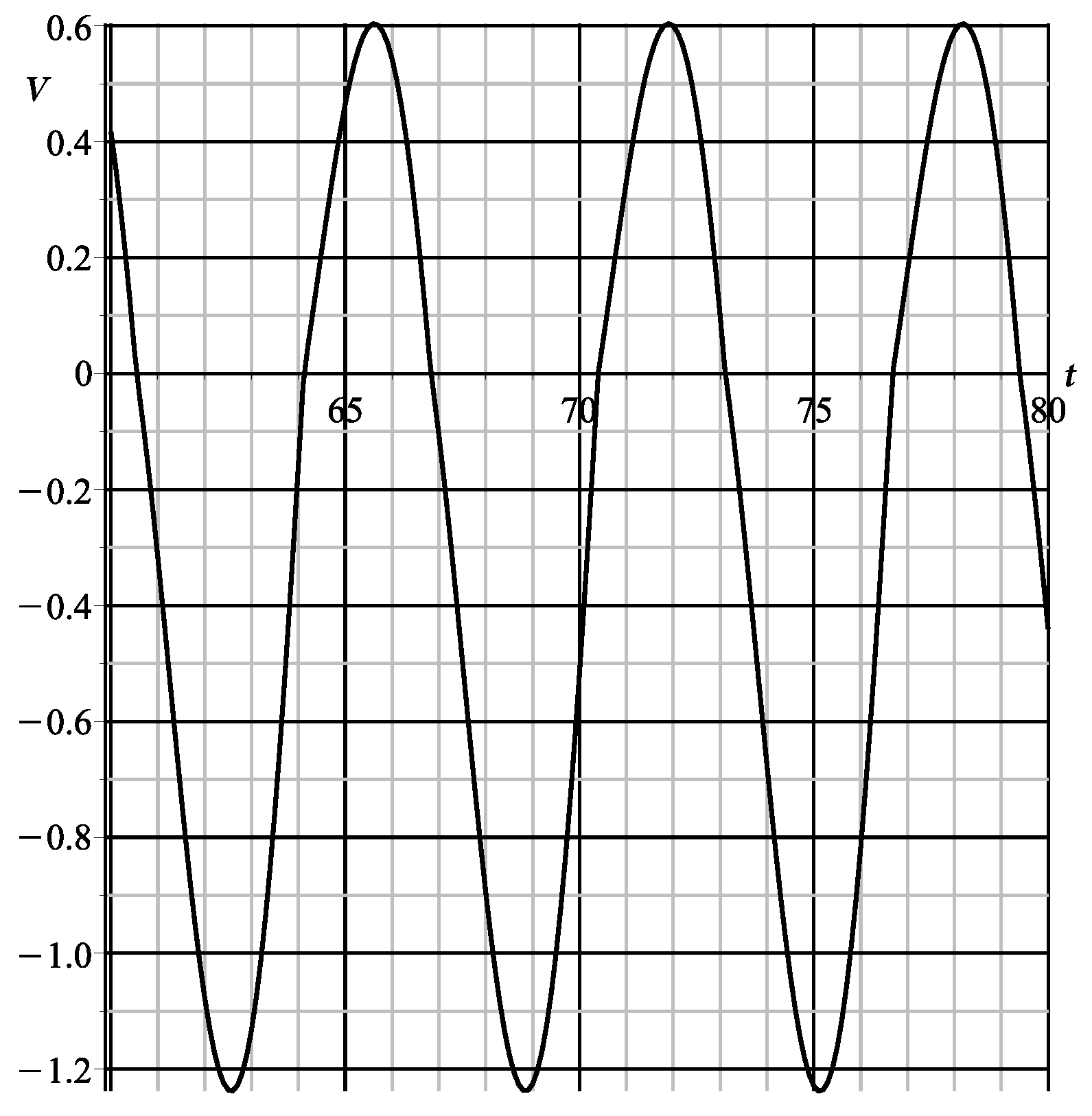

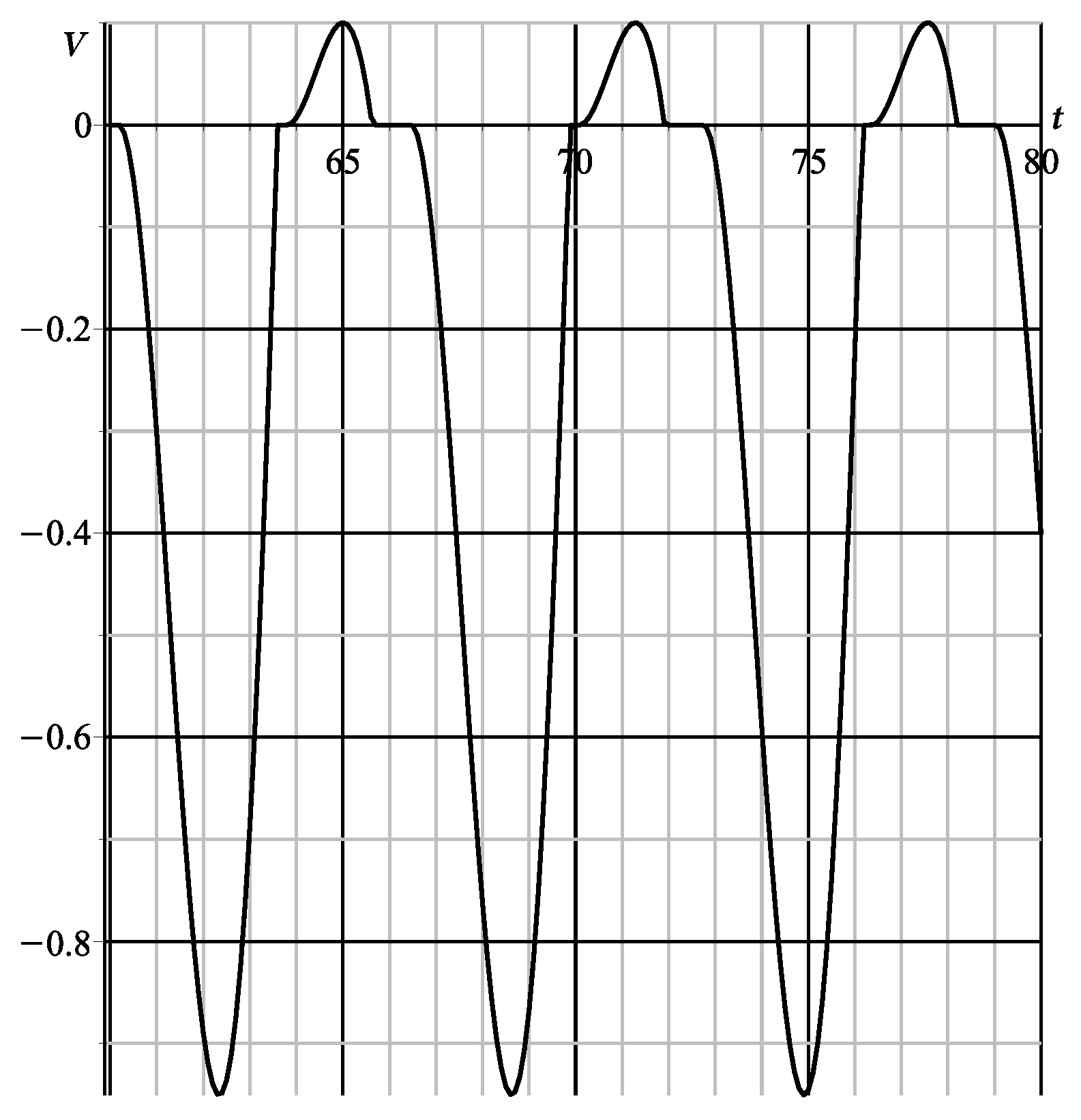
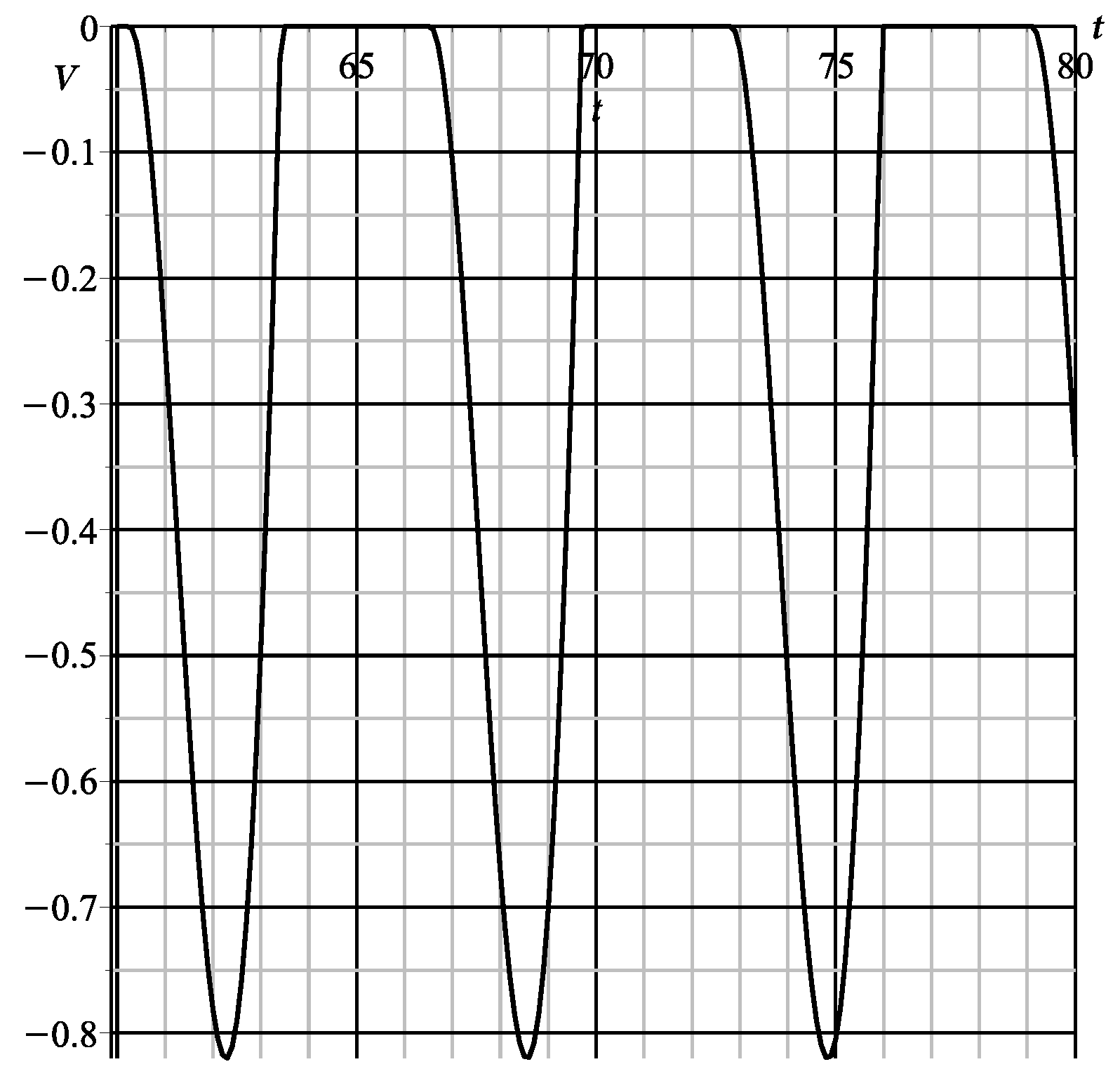
| 0.1 | − 0.0958 | − 0.1007 | 0.0049 | 5.11 | 4.87 |
| 0.2 | − 0.1910 | − 0.2013 | 0.0103 | 5.39 | 5.11 |
| 0.3 | − 0.2648 | − 0.3020 | 0.0372 | 14.05 | 12.32 |
| 0.4 | − 0.3048 | − 0.4026 | 0.0978 | 32.08 | 24.29 |
| 0.5 | − 0.2898 | − 0.5033 | 0.2135 | 73.67 | 42.42 |
Disclaimer/Publisher’s Note: The statements, opinions and data contained in all publications are solely those of the individual author(s) and contributor(s) and not of MDPI and/or the editor(s). MDPI and/or the editor(s) disclaim responsibility for any injury to people or property resulting from any ideas, methods, instructions or products referred to in the content. |
© 2025 by the authors. Licensee MDPI, Basel, Switzerland. This article is an open access article distributed under the terms and conditions of the Creative Commons Attribution (CC BY) license (https://creativecommons.org/licenses/by/4.0/).
Share and Cite
Zeidis, I.; Bolotnik, N.; Zimmermann, K. The Second Approximation of the Averaging Method in the Dynamics of Controlled Motions of Vibration Systems with Dry Friction. Axioms 2025, 14, 694. https://doi.org/10.3390/axioms14090694
Zeidis I, Bolotnik N, Zimmermann K. The Second Approximation of the Averaging Method in the Dynamics of Controlled Motions of Vibration Systems with Dry Friction. Axioms. 2025; 14(9):694. https://doi.org/10.3390/axioms14090694
Chicago/Turabian StyleZeidis, Igor, Nikolay Bolotnik, and Klaus Zimmermann. 2025. "The Second Approximation of the Averaging Method in the Dynamics of Controlled Motions of Vibration Systems with Dry Friction" Axioms 14, no. 9: 694. https://doi.org/10.3390/axioms14090694
APA StyleZeidis, I., Bolotnik, N., & Zimmermann, K. (2025). The Second Approximation of the Averaging Method in the Dynamics of Controlled Motions of Vibration Systems with Dry Friction. Axioms, 14(9), 694. https://doi.org/10.3390/axioms14090694








